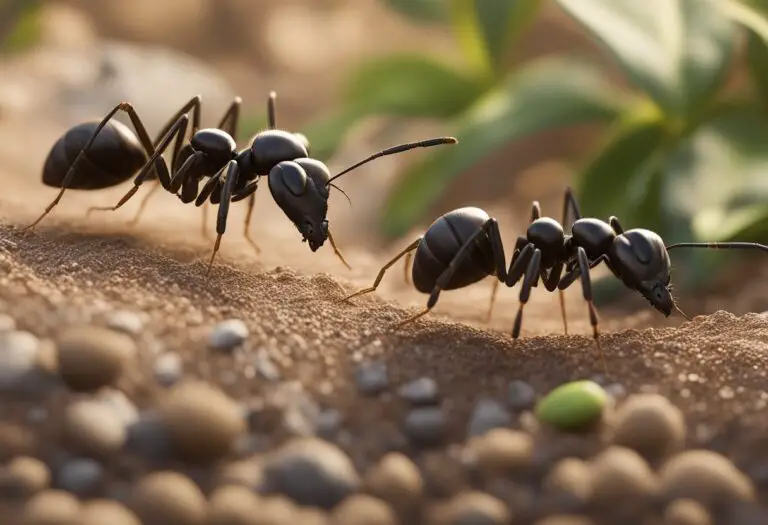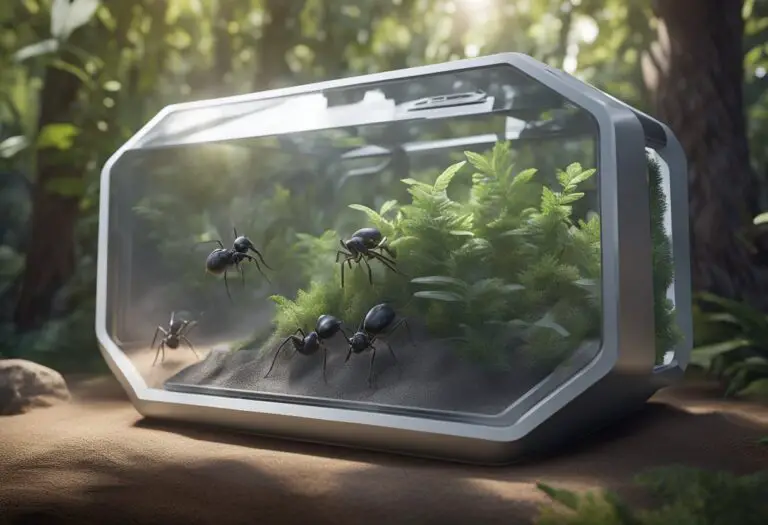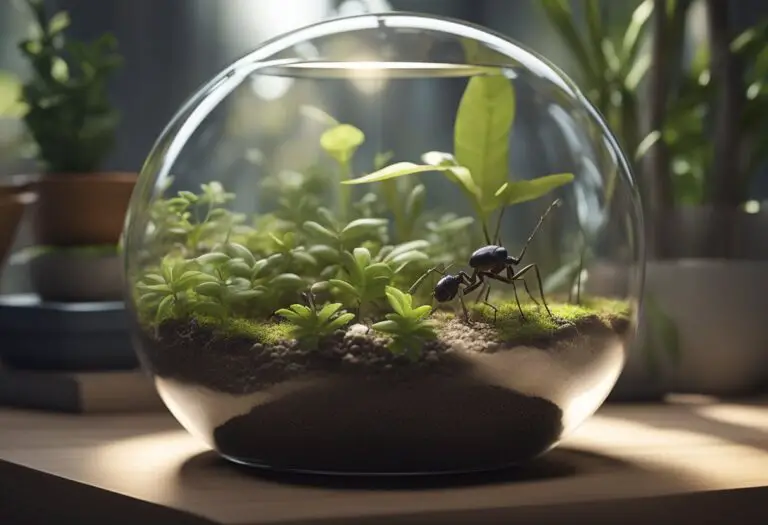What Are the Different Types of Ant Habitats? A Comprehensive Guide
Ants are fascinating creatures that are known for their organized colonies and hardworking nature. They can be found in a variety of habitats, each with its unique characteristics. Understanding the different types of ant habitats can help us appreciate these insects’ diversity and the vital role they play in our ecosystem.
Ants are found in almost every part of the world, from deserts to rainforests, and from mountains to grasslands. They have adapted to different environments and have developed unique behaviors and physical features to survive in their respective habitats. Some ants live in underground nests, while others build their homes in trees or even in the cracks of buildings. Each habitat has its unique challenges and opportunities, and ants have found ways to thrive in all of them.
In this article, we will explore the different types of ant habitats and the characteristics that make them suitable for these insects. We will discuss the various adaptations that ants have developed to survive in these habitats and how they contribute to the ecosystem. Whether you are a nature enthusiast or just curious about these fascinating insects, this article will provide you with a comprehensive understanding of the diverse world of ant habitats.
Understanding Ant Habitats

Ants can be found in a variety of habitats, both natural and artificial. Understanding the different types of ant habitats can help in identifying and controlling ant infestations.
Natural Habitats
Ants have adapted to various natural habitats including forests, grasslands, deserts, and wetlands. Some species of ants prefer to nest in soil while others prefer to nest in trees or other vegetation. Ants that nest in soil often create mounds or hills, while those that nest in trees or vegetation may create nests or colonies in the leaves or branches.
Ants are also known to form mutualistic relationships with other insects and animals, such as aphids or mealybugs, which provide a food source for the ants in exchange for protection from predators.
Artificial Habitats
Ants are highly adaptable and can thrive in artificial habitats created by humans. Common artificial habitats for ants include homes, offices, and other buildings. Ants can enter buildings through cracks in the foundation, gaps in windows and doors, and other openings.
Ants are attracted to sources of food and water, so keeping a clean and dry environment can help prevent ant infestations. Additionally, sealing cracks and gaps in buildings can help keep ants out.
Overall, understanding the different types of ant habitats can help in identifying and controlling ant infestations, both in natural and artificial environments.
Natural Habitats

Ants can be found in a variety of natural habitats, each with its own unique characteristics. Some of the most common natural habitats for ants include underground nests, wood nests, leaf litter, and living plants.
Underground Nests
Underground nests are one of the most common types of ant habitats. These nests are typically found in soil, and can range in size from small burrows to large underground networks. Ants that live in underground nests are often social insects that work together to maintain the nest and care for their young.
Wood Nests
Wood nests are another common type of ant habitat. These nests are typically found in dead or decaying wood, and can vary in size and shape. Ants that live in wood nests are often carpenter ants, which are known for their ability to tunnel through wood.
Leaf Litter
Ants can also be found in leaf litter, which is the layer of dead leaves and other organic material that accumulates on the ground in forests and other natural areas. Ants that live in leaf litter are often ground-dwelling species that forage for food and build their nests in the soil beneath the leaves.
Living Plants
Finally, ants can also be found living on living plants, such as trees and shrubs. Some ants form mutualistic relationships with plants, in which the ants protect the plant from herbivores and other predators in exchange for food and shelter. Other ants may simply use plants as a source of food or as a place to build their nests.
Artificial Habitats

Ants can also be kept in artificial habitats, which are often used for educational and entertainment purposes. These habitats can range from simple ant farms to more complex setups designed to mimic urban environments.
Ant Farms
Ant farms are perhaps the most well-known type of artificial ant habitat. They typically consist of a clear plastic or glass container filled with sand or gel, and a colony of ants is introduced into the habitat. The ants then tunnel through the substrate, creating a network of tunnels and chambers that can be observed through the clear walls of the container.
Ant farms are often used in schools and homes as a way to teach children about ant behavior and the importance of insects in our ecosystem. They can also be a source of entertainment, as watching the ants go about their daily activities can be fascinating.
Urban Environments
In recent years, there has been a growing trend of creating artificial habitats that mimic urban environments. These habitats often include miniature buildings, roads, and other structures, and are designed to provide a more realistic environment for the ants to live in.
One benefit of these urban environments is that they can allow researchers to study the behavior of ants in a more complex and realistic setting. For example, researchers can observe how ants navigate through a maze of buildings and roads, and how they interact with each other in a crowded urban environment.
Overall, artificial habitats can be a useful tool for studying ant behavior and educating people about the importance of insects in our ecosystem. However, it is important to ensure that the ants are kept in a safe and humane environment, and that their needs are properly met.
Factors Influencing Habitat Choice

Ants are found in a wide range of habitats, from deserts to rainforests, and their choice of habitat is influenced by several factors. These factors include climate, food sources, and predation pressure.
Climate
Climate is one of the most important factors influencing ant habitat choice. Ants are ectothermic, which means that their body temperature is regulated by the environment. Therefore, ants are more likely to be found in habitats with temperatures that are within their preferred range. For example, some ant species prefer warmer temperatures and are found in tropical or subtropical regions, while others prefer cooler temperatures and are found in temperate regions.
Food Sources
Food is another important factor influencing ant habitat choice. Ants are omnivorous and feed on a variety of food sources, including insects, seeds, nectar, and honeydew. Ants are more likely to be found in habitats that provide a reliable source of food. For example, some ant species are associated with plants that produce nectar, while others are associated with insect prey.
Predation Pressure
Predation pressure is another factor that influences ant habitat choice. Ants are preyed upon by a variety of predators, including birds, reptiles, and other insects. Ants are more likely to be found in habitats that provide cover from predators. For example, some ant species build nests underground or in rotting wood, while others build nests in the canopy of trees to avoid ground-dwelling predators.
In summary, ant habitat choice is influenced by several factors, including climate, food sources, and predation pressure. Ants are more likely to be found in habitats that provide the optimal conditions for their survival and reproduction.
Conservation of Ant Habitats

Ants play a crucial role in maintaining the balance of ecosystems. They are responsible for soil aeration, nutrient cycling, and seed dispersal. Therefore, it is essential to conserve their habitats to ensure their survival and the health of the environment.
Here are some ways to conserve ant habitats:
- Protect natural habitats: Ants thrive in natural habitats, such as forests, grasslands, and deserts. Therefore, it is crucial to protect these areas from human activities, such as deforestation, urbanization, and agriculture.
- Avoid using pesticides: Pesticides can harm ants by killing them directly or indirectly. Therefore, it is essential to avoid using pesticides in areas where ants live.
- Provide nesting sites: Ants need suitable nesting sites to survive. Therefore, it is crucial to provide them with suitable habitats, such as logs, rocks, and soil.
- Plant native vegetation: Ants rely on native vegetation for food and shelter. Therefore, it is essential to plant native vegetation in areas where ants live.
- Educate the public: Educating the public about the importance of ants and their habitats can help raise awareness and promote conservation efforts.
By implementing these conservation measures, we can help protect ant habitats and ensure the health of our ecosystems.
Impact of Ant Habitats on Ecosystems

Ants are a crucial component of many ecosystems, and their habitats can have a significant impact on the health of those ecosystems. Ants are often considered keystone species, meaning that they play a critical role in maintaining the balance of their ecosystem.
One of the most important ways that ants impact ecosystems is through their role as decomposers. Many species of ants are responsible for breaking down dead plant and animal matter, returning nutrients to the soil and allowing other organisms to thrive. Without ants, the buildup of organic matter could lead to a decline in soil quality and a decrease in the overall health of the ecosystem.
Ants also play a vital role in seed dispersal. Some species of ants are known to collect and disperse seeds, helping to spread plant life throughout their habitat. This process is essential for maintaining biodiversity and ensuring that a variety of plant species can thrive in the ecosystem.
Finally, ants can also have a significant impact on the population dynamics of other organisms in their habitat. For example, some species of ants are known to prey on other insects, helping to control their populations and prevent outbreaks. Additionally, ants can provide food for other animals, such as birds and small mammals.
Overall, the impact of ant habitats on ecosystems is significant and multifaceted. By understanding the role of ants in their environment, we can better appreciate the importance of maintaining healthy ant populations and protecting their habitats.







